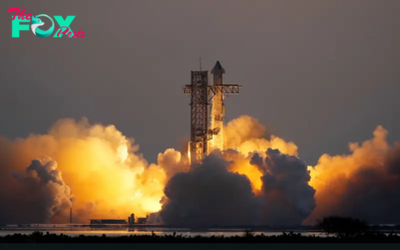Science
Could we turn the sun into a gigantic telescope?
We have some incredibly powerful telescopes that have given us spectacular views of the cosmos and allowed us to look back to the early days of the universe. These observatories, such as the James Webb Space Telescope (JWST), are amazing feats of engineering that have required billions of dollars and decades of work.
But what if we could access an even better telescope that already exists? This wouldn't be a typical telescope. It wouldn't even come with a lens. But it would be by far the most powerful telescope we'd ever built.
This telescope would use the sun itself.
To give some perspective on how powerful a sun-based telescope could be, consider JWST. With a mirror that's 21.3 feet (6.5 meters) in diameter, JWST is capable of achieving a resolution of around one-tenth of an arcsecond, which is about 600 times better than the human eye. At that resolution, the telescope could see the details on a coin placed 25 miles (40 kilometers) away from it or pick up the pattern of a regulation soccer ball sitting 342 miles (550 km) away.
Another example is the Event Horizon Telescope, which is really a network of individual instruments scattered across the globe. By carefully coordinating its elements, the telescope has given us impressive images of the disks of gas surrounding giant black holes. To achieve that, it managed an impressive resolution of 20 microarcseconds. At that resolution, the telescope could spot an orange sitting on the surface of the moon.
Related: Monster black hole is starving its host galaxy to death, James Webb telescope reveals
But what if we wanted to go even bigger? A larger telescope would need either gigantic dishes or networks of antennae flying through the solar system, both of which would require enormous leaps in our technological capabilities.
-

 Science2d ago
Science2d agoInside Capitol Hill’s Latest UFO Hearings
-

 Science2d ago
Science2d agoYou Won’t Want to Miss the Leonid Meteor Shower. Here’s How and When You Can See It
-

 Science3d ago
Science3d agoHere’s What Trump’s Win Means for NASA
-

 Science6d ago
Science6d agoWhy Risky Wildfire Zones Have Been Increasing Around the World
-

 Science6d ago
Science6d agoIt’s Time to Redefine What a Megafire Is in the Climate Change Era
-

 Science1w ago
Science1w ago4 Astronauts Return to Earth After Being Delayed by Boeing’s Capsule Trouble and Hurricane Milton
-

 Science1w ago
Science1w agoThe Elegance and Awkwardness of NASA’s New Moon Suit, Designed by Axiom and Prada
-

 Science1w ago
Science1w agoSpaceX Launches Its Mega Starship Rocket. This Time, Mechanical Arms Catch It at Landing



























